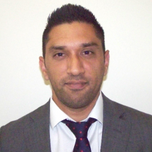Putting the SG Back into ESG Investing with Better Data and Improved Risk Management
Here at VERMEG, we’ve been delivering innovative software solutions for over 20 years, and we go out of our way to share our expertise with the rest of the industry. We host a regular podcast called FinTalk, where we share the latest news in FinTech and RegTech across banking, insurance, and finance.
I recently had the pleasure of chatting to Navin Rauniar, a partner at Tata Consultancy Services, where we tackled the subject of ESG (environmental, social, and governance). Let’s look at what Navin had to share with us.
An Introduction to ESG Investing
Navin has spent over twenty years in the industry and started in banking with joint asset management before going into commodity firms and heading up a team at Credit Suisse. That led him to consultancy work, which is where he is now.
His work focuses on ESG investing, which means he spends a lot of time looking into how investors can minimize and mitigate climate change while powering the journey to net zero. The responsibility is no longer just with our governments – investors have a role to play too, because it’s credit that drives the economy.
Putting the SG Back in ESG
A lot of people talk about the environmental part of ESG, and rightly so given that we’re in the middle of a climate crisis. But we also need to think about the social and governance angles, as well as the correlation between all three. Each one affects the others, and degradation in the environment isn’t great for social and governance metrics.
Let’s start by taking a look at social value. We typically measure that by looking at things like the gender pay gap, diversity and inclusivity, mental health, and industrial accidents. Metrics like the number of sick days being taken are being used to measure social value, especially at big companies which are already required to disclose this kind of information due to the various legislation around the world.
This moves naturally into governance. For example, in the UK, the government is looking into reducing social deprivation and building more social housing. But how do you create a metric for something like the amount of regulatory risk and whether the company is following best practices?
We’re still figuring out exactly how to standardize all of this, but the idea of ESG isn’t new. The data is already there, it’s just a case of bringing it together and understanding it all.
The Importance of Data Capture
When it comes to data capture, the first thing we’ve got to think about is BCBS 239, a standard that aims to establish “principles for effective risk data aggregation and risk reporting”. This is hard enough for large companies, but smaller institutions don’t have the resources or the support they need to ensure full alignment with BCBS 239.
That leaves us with two problems. As well as thinking about data standardisation and establishing key data points for ESG, we also need to ensure that we’re using BCBS 239 as best practice. The good news is that the standard provides a great way to get started when you’re standardizing your data, and that’s something that Navin does a lot with his clients.
If we think back to the financial crisis of 2008, a lot of that was caused by poor data and failures in the way that we understood collateral and market ratings. Unless we want to go back to that era, which we don’t, then we need to make sure that our data is high quality and that we’re using ESG ratings to value bonds and loans.
Best Practices
This is where the tier one companies need to establish and follow best practices, because if they do that then tier two and tier three companies will fall in line. According to the government’s ESG timeline, the PRA expects firms to embed their supervisor statement 3/19, which means that companies are going to have to make all sorts of new disclosures.
SS3/19 is a remarkable piece of regulation that has had strong support from the Bank of England’s Climate Financial Risk Forum (CFRF). The CFRF has been sponsored by large institutions and made metrics like risk limits and risk appetite more important than ever before.
When we think about climate risk stress testing, we need to make it more meaningful. How can we use those metrics on a daily basis to push toward the future of risk management? And how do we approach the monitoring of, for example, methane leaks from a factory to which we’ve loaned $100 million?
The Future
SS3/19 is designed to allow financial institutions to be clear about how much risk they’re willing to tolerate. It’s also interlinked with the 30-year stress tests that need to be done as part of the Biennial Exploratory Scenario (BES), as well as the 50-year stress tests and 70-year stress tests that we’re already carrying out. It’s going to have a huge impact in the years to come.
We now have the challenge of finding the right balance between risk versus reward in the markets while simultaneously using the Edinburgh reforms to position London as the go-to place for raising sustainable finance. We also need to remember what happened back in 2008.
Innovative financing tools like TNFT swaps will help because everyone in the west knows that we need to move to a greener economy. This journey began a good 20 years ago, but it’s only now that we’re looking at connecting ESG to climate change and concepts like the circular economy. This is one of the biggest opportunities that the industry is currently coming to terms with.
We’ve made great progress over the last year in fields like fund labeling, and there are a number of different initiatives coming out like the EU taxonomy, the SFDR, and the CSDR. In the US, the Inflation Reduction Act has been passed.
Putting all of this together is what’s going to power us into 2023 and beyond, not only in the UK but also around the world. There’s still a lot for us to do, but it’s an exciting time to be in the industry. It’ll be interesting to see what the future brings.
Jawad Akhtar
Head of Professional Services

